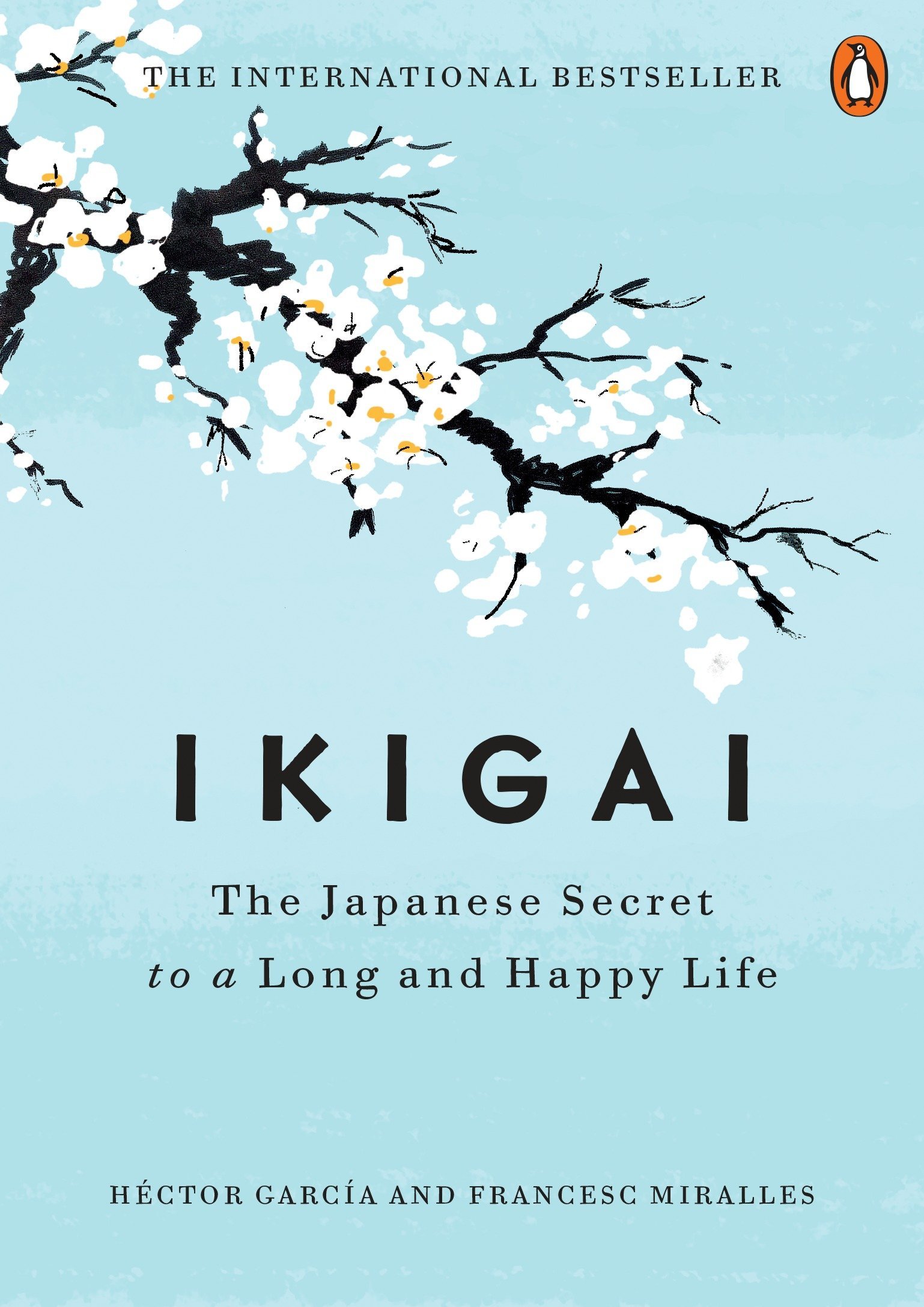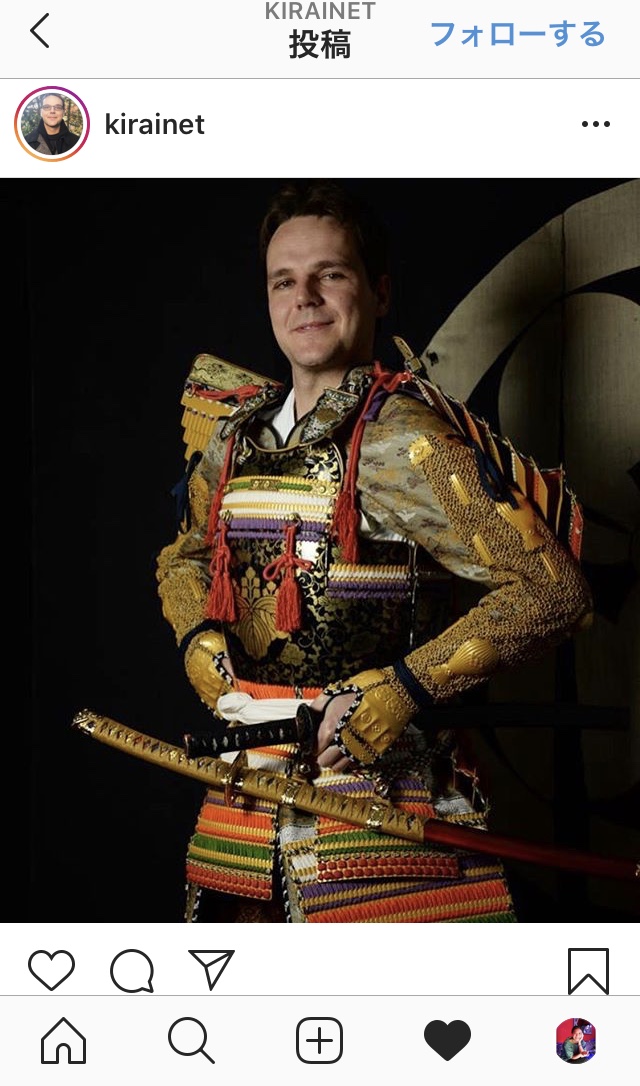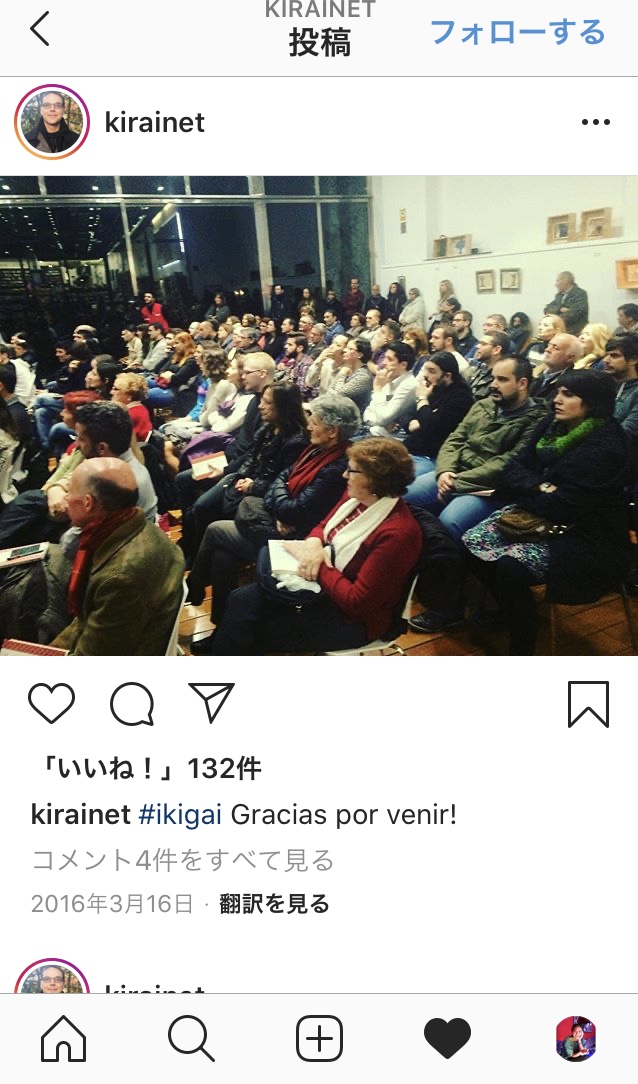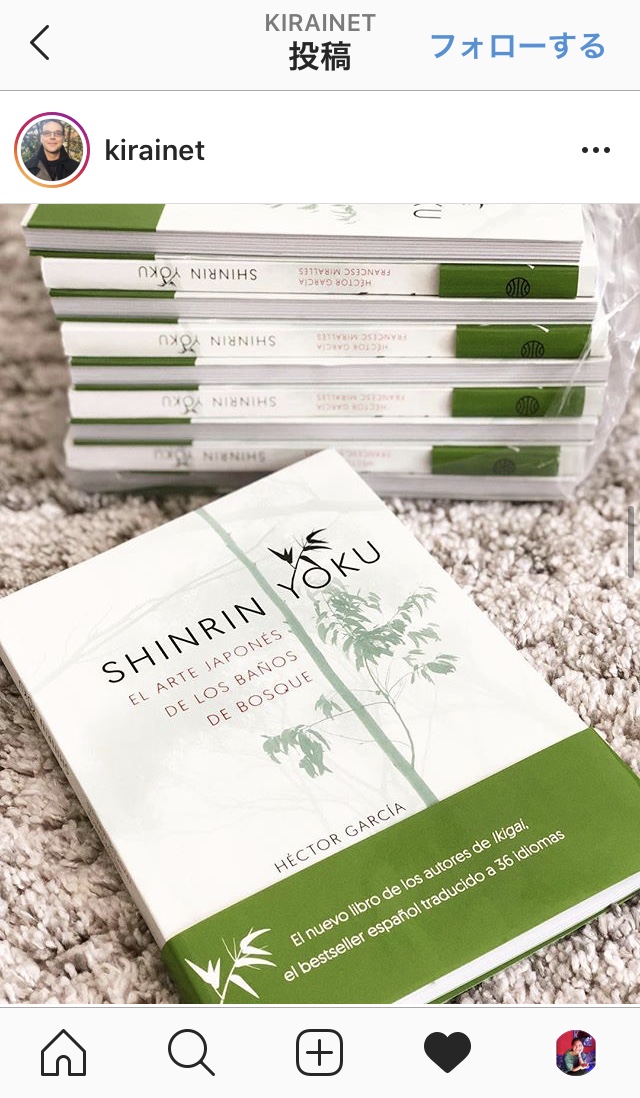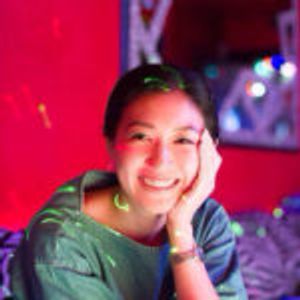Drinking along, traveling alone, eating alone. Over these past several years there has been a growing awareness and understanding when it comes to “solo activities,” which refer to actions and experiences where the individual values going at their own pace and their own thoughts. Based on a philosophy of emotional independence and overcoming reliance on others, these are gaining widespread acceptance as the starting point for cultivating a whole new you, rather than being seen in terms of negative sentiments like “loneliness” and “being alone.”
Now that there are tons of Japanese words that have become commonly-known phrases worldwide in their untranslated state, such as “otaku,” “emoji,” and “mottainai,” the Spanish writer Hector Garcia serves as the figure that has spread the word Ikigai (purpose in life) to the world at large. The Japanese language version of his book is called Ikigai: The Japanese Secret to a Long and Happy Life as Discovered by a Foreigner (X-Knowledge Co. Ltd., 2017). The same book was published in the West in 2016, where it continues to garner attention to this day. In one passage on “Using flow to find your ikigai” (where “flow” is defined as a sense of intense focus and concentration achieved by a person immersing themself in an activity), he posits that people can find their ikigai by taking a good, hard look at themselves and seeking out those things that they can immerse themselves in, and those things that they truly love.
Solo activities involve a person reserving time for themselves alone, immersing themselves in something to their heart’s content, and discovering a new sense of values. We asked Hector about the connection between solo activities and ikigai, and what ikigai means to him as an author.
−−Can you start by telling us what prompted you to move to Japan back in 2004?
Hector Garcia (Hector below): After graduating from university in Spain, I applied for internships in the United States, Switzerland, and Japan, and I was accepted in Switzerland and Japan. And with that my fate was sealed. I went to Switzerland first, then on to Japan next. I found a job through my internship, and have remained here ever since. This year will be my 16th year living in Japan.
−−What were your impressions of Japan when you first arrived?
Hector: I think it was probably a similar sensation to how a Japanese person going to Europe for the first time would feel. I had traveled to places like Africa, Europe, and the United States before, but Japan was the first time I had been to Asia. I saw tons of things that I had never seen before, and it was a wondrous sensation akin to arriving in outer space.
Back then in 2004 there were very few signs written in English, and so I was in this world where I didn’t understand anything, which made every day an adventure. I started a blog where I brought together all these wonderful experiences I had and questions I asked of my Japanese acquaintances regarding words and cultural elements whose meaning I didn’t understand. Back then just about the only articles related to Japan in Spain were ones dealing with the films of Akira Kurosawa, and real Japanese culture hadn’t permeated the country at all. I began the blog and writing out of a desire to introduce the surprising experiences I had in Japan to other people. My blog even hit number one in the rankings based on the number of blog readers in Spain.
As for Japanese food, there are some foods that I’m still encountering for the first time, like at travel destinations and the like. I feel like Japanese food is like the Japanese language in that it is indicative of a deep and rich culture.
−−Ikigai is a word you learned over the course of your daily life, isn’t it?
Hector: When I first learned the word Ikigai I thought it was such an interesting word, and I had this desire to spread it to the world. I never write about the negative aspects of Japan in my writings so some people tell me that this isn’t the real Japan. But spreading the positive aspects of Japan is more my style. I wanted the word ikigai to become as widespread and entrenched in other countries as terms like “geisha,” “samurai,” and “sushi” had become. By now, my book titled Ikigai has gone through about 50 printings, and mine was the first book dealing with the subject of ikigai to be printed overseas. I have a deep-seated feel for the charm of this term. Japanese television shows have reported on Ikigai, and I’ve received coverage from them on a number of occasions.
−−What was it that prompted you to start thinking deeply about ikigai?
I suffered from an illness similar to ulcerative colitis for about two or three years starting from 2012, which was a miserable experience. This isn’t something I’ve publicly disclosed in my writings at all, but in a certain sense Ikigai was something I wrote for myself as I was suffering both mentally and physically.
When the book was first published in 2016 I found it a real mystery as to why it was selling so much, and it has gone on to sell more than 2 million copies worldwide. This has also been affected by the coronavirus pandemic. People lack freedom to go out and have to stay at home the whole time. They can’t go traveling and even if they have money they have nothing to spend it on, and for that matter even those people who are working no longer know what it is they’re working for. So that being the case, it seems people are giving thought to ikigai.
−−The contents of interviews you performed in an Okinawan village where the people live long lives serves as a central pillar of the book. Why did you choose Okinawa?
Hector: I took inspiration from the fact that the philosopher Sartre’s thinking and his notion of existentialism was connected to his wife’s family in Okinawa, where she was originally from. His wife was originally from Naha City, and so they visited Okinawa a countless number of times.
In writing the book, I traveled to Ogimi Village in Okinawa with Francesc Miralles, who in Spain is a writer on par with Haruki Murakami. He’s an expert when it comes to interviews and gathering data, so he was in charge of editing the book. In Ogimi Village we interviewed over 100 people on what ikigai meant to them.
In December of last year I went to Ogimi Village to work on a documentary for National Geographic. Back when I first visited in 2015 the local people probably thought I was this weird foreigner, so it was strange to me that this time when I went I was popular there. They had a copy of Ikigai at the minpaku (private residence offering lodging) where I stayed, which they asked me to sign. Yet at the same time, I’ve also come to feel a responsibility as an author. So for example, if I were to write too much about great places in Japan I worry that it might increase the number of tourists too much. While I think that it is important to strike a balance, I want to stick to my own personal convictions of only writing about Japan’s merits.
Also, one thing that surprised me is that when I went to India in October of last year I discovered that Ikigai had been a number one best-seller there for 13 months running. The book is doing well in the United States, but nowhere near as well as in India.
−−Lots of people overseas are being introduced to Ikigai over YouTube.
Hector: I get asked a lot–especially by men in the United States–about what they should do to discover their ikigai. Ikigai spends 15 chapters introducing the reader to how to discover their own ikigai, and presents ideas like keeping a daily journal and exercising. Everyone’s personality and disposition is unique, so I don’t feel like there’s one single answer for this.
One weak point of the Japanese people is that they tend to go along with those around them and do as they are told by other people. In doing so, it can sometimes lead to emotional pain and even depression and suicide. Such conditions can arise when we are estranged from our true selves. We ought to first understand who we are ourselves, then from there we can find our ikigai. Ikigai serves as a compass, and when we are estranged from who we really are we tend to lose sight of where our compass is pointing. We ought to start by first discovering where our own compass is pointing.
We can sometimes lose sight of ourselves when we spend every day busy with work and family. No matter what our circumstances, we should find time and space for ourselves. Activities like yoga, meditation, and keeping a simple daily journal are great for this. Just writing down three things you enjoyed that day and three things you didn’t like is great. When you keep writing this out for two weeks straight you realize that the things you don’t like are the same throughout and repeat over and over again. So through this you can consider actions you can take in response to what you don’t like. It’s good to increase activities that put us into a flow state everyday. For example, if someone has three hobbies, I think they should pick the one that is most conducive to putting them in a flow state. I think that the concept of flow is an easy one to understand for people who play sports. It may be difficult and painful at first, but once you get the feel of it, it can give rise to a sense of happiness.
2.Hector discovering his book at a bookstore in an airport in India
3.An event commemorating the book’s publication in 2016 was attended by numerous people, including men and women of all ages
From the official Instagram of Hector Garcia (@kirainet)
−−Do you think there’s a connection between actions that put you in a flow state and solo activities?
Hector: Oftentimes it is solo activities that let us enter a flow state. Depending on the situation there may be times where this is better done with two people, which is something that’s on my mind now, but it is important to achieve balance. When people go too far into their own headspace they tend to lose the ability to value the people around them. When it comes to my own flow state, starting from around 10:00 in the morning I will write without laying a finger on my computer or smartphone, after which I’ll exercise or listen to music. Even after the pandemic started this flow hasn’t changed, even as there have been changes to my daily life. I don’t like to take risks, so I don’t really go out much and I’m not meeting up with people. I talk with friends over Zoom quite often, but it gets lonely not being able to meet up with people.
Also, if I don’t walk around then I start to get stressed out, so I’ll take short strolls with my wife, and when I want to take a long walk I’ll head out on my own. I like walking around because it gives me a change of pace and is a mental refresher. In Mediterranean cultures taking “aimless walks” is a deep-seated routine behavior. The people there will hit the road and walk around with no aim in mind, then drop by a cafe when they get tired. I’ll walk around Tokyo with the same sensibility, and sometimes even head to Yoyogi Park or Shinjuku Gyoen for some forest bathing.
From the official Instagram of Hector Garcia (@kirainet)
−−What is ikigai?
Hector: Writing is one form of ikigai for me, but since I do so many different things it’s not the most important one for me. There are some times when I get tired of writing after just one or two hours in the morning. I also like taking pictures, going for walks, and traveling. I want to connect with people all around the world through the articles I write. Doing this lets me hear various ideas from all over the world. My new book, “Magic of Japan,” will be published soon. First the Spanish language version will come out, then the English version will be published next year. It will highlight 50 appealing spots around Tokyo together with photos of them. It will include some places that are well-kept secrets as well. Whenever I finish writing one book I get started writing the next one. For this next book, I’d like to write about the theme of words that are rooted in the Japanese sense of aesthetics, like wabisabi (acceptance of transience and imperfection). I also find there to be profound depth and beauty in the philosophy behind Japanese gardens.
I don’t write anything I don’t feel a heartfelt desire to write. I also don’t know whether I’ll publish what I write as a book. Take Japan, for example, which is a society that is risk-averse. I’m like Japanese people in this way, in that my own thinking has come to be risk-averse. Humans harbor a sense of fear within their subconscious minds. I was in Japan when the accident at the Fukushima Nuclear Power Plant occurred, and I’m afraid of earthquakes. Whenever something happens, I think it’s important to go about without taking risks. I want to continue studying Japanese culture still more.
Moreover, there are a lot of Japanese people who wholeheartedly immerse themselves in their interests, which is a way they resemble Spaniards a little bit. I feel that this ties in with otaku (nerd) culture, and is even connected to ikigai. There are tons of talented people on Twitter and Instagram, including comic book authors and artists, implying that in Japan you have lots of people who are finding their ikigai. But it’s totally fine if you don’t have a clear idea of what your ikigai is. That’s because probably only about 10% of people keep on doing the same thing from childhood until the time they’re 90 years old.
Hector Garcia
Born in Spain, has lived in Japan since 2004. Before moving to Japan, was affiliated with the European Organization for Nuclear Research (CERN) as an engineer. Currently active as an author. His website that spreads the word on Japanese pop culture called kirainet.com receives more than 1 million hits each month from all over the world. Has co-authored a number of books, including IKIGAI: the Japanese Secret to a Long and Happy Life (Penguin Random House, 2017) and The Book of Ichigo Ichie (Penguin Random House, 2019), together with Francesc Miralles, a journalist who specializes in psychology and spirituality.
Héctor García official website
Text Miho


